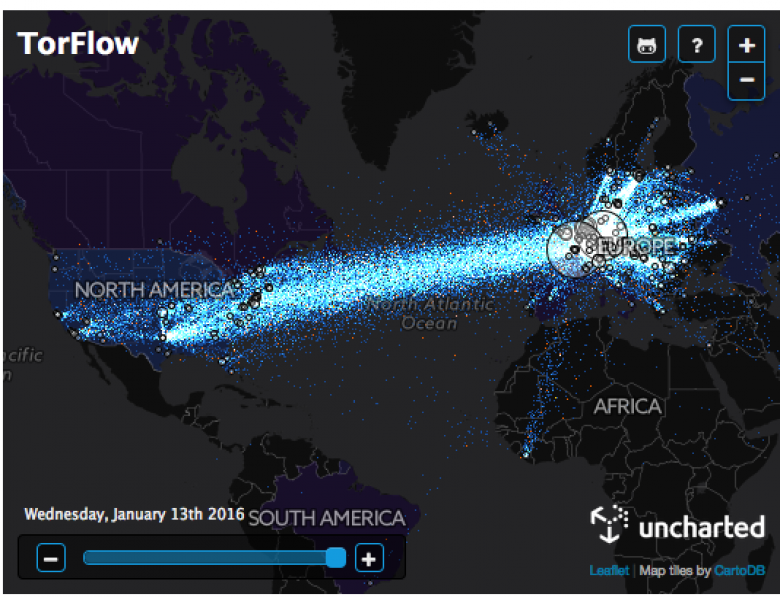Here’s What Tor’s Data Looks Like as It Flows Around the World
For a tool that’s meant to serve as a cloak of online anonymity, Tor is surprisingly transparent. The non-profit Tor project whose software powers its network of thousands of volunteer proxy computers also publishes a frequently updated collection of data about the location and bandwidth of those privacy-enhancing machines on desks and in datacenters around the world. Now a data visualization company has assembled that data into an interactive graphic, beautifully capturing the Tor network’s complexity and scale.
TorFlow, a project created by the data visualization software firm Uncharted, maps the Tor network’s nodes and data movements based on the IP addresses and bandwidth of the “relay” computers that bounce around its users’ connections to prevent them from being censored or surveilled. (A simplified version is shown above, but the full interactive graphic is hosted at Uncharted’s website.) “The whole point of the Tor network is to remain anonymous,” says David Schroh, one of Uncharted’s software engineers who built TorFlow. “But by visualizing it, can you see patterns you wouldn’t expect.”









































































